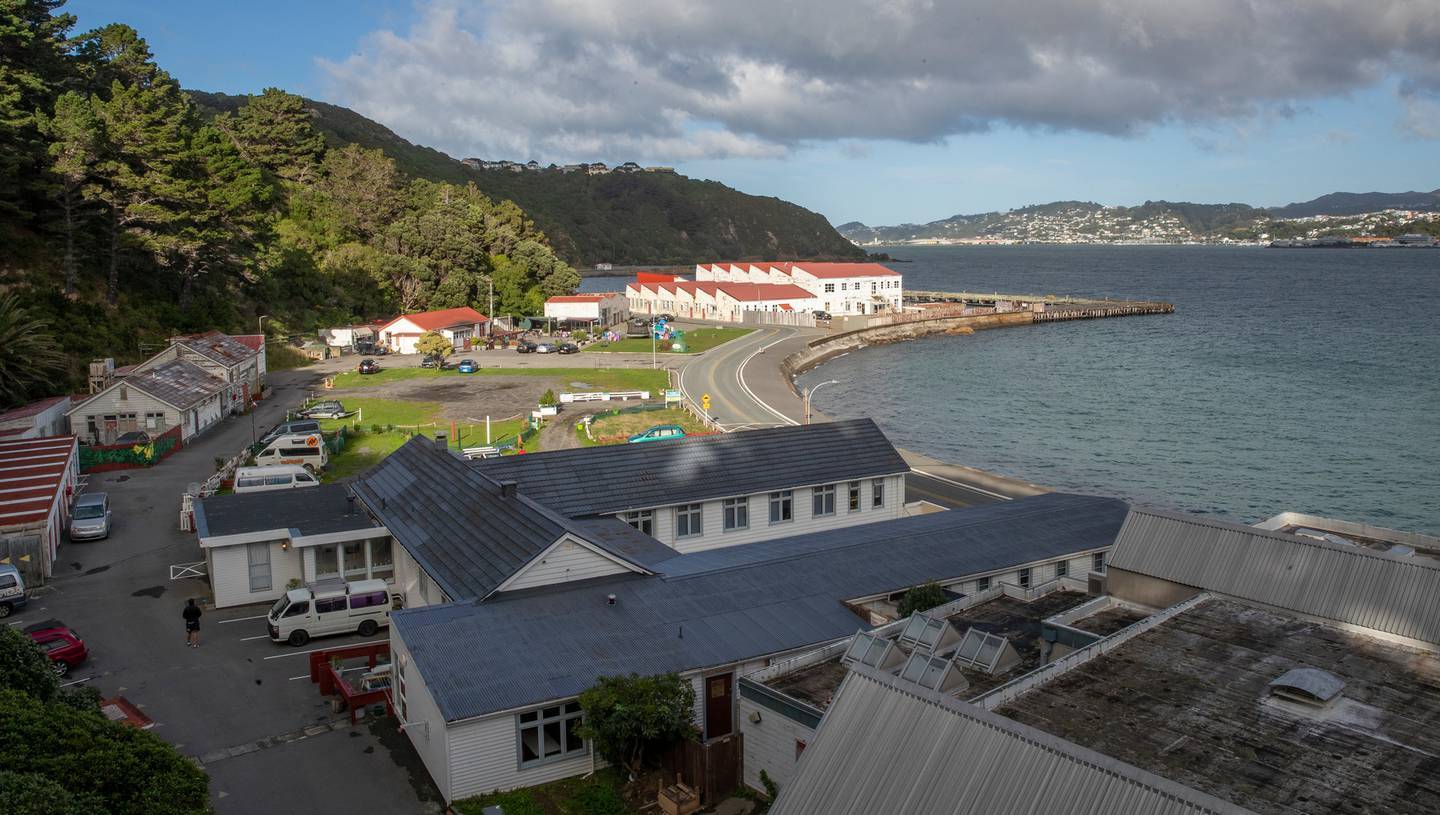This article has been written by Tony Short (Taranaki Whanui, construction and architectural consultant, Miramar Peninsula resident, Shelly Bay occupation supporter) and is published here with his permission.
Le 9 Décembre 2021 - Tags: opinion, insideWellington, shellyBay
You may have heard the Wellington City Council saying recently that protesters must leave their occupation at Shelly Bay because of health and safety concerns over the presence of asbestos in a building near the occupation site.
Twelve years after this land was transferred from Defence into open public use, and 12 months after the occupation began, the WCC staff suddenly discovered an urgent asbestos health and safety issue. They sent the protesters 24 hours notice of the land being closed and having to leave.
But when we look at the facts, this “health and safety” concern doesn’t ring true. It looks more like the Council obligingly finding an excuse to clear the peaceful protesters from the site for a controversial property developer. Never mind that the protesters say the land was unlawfully sold to the property developer and that there is currently a case before the Maori Land Court on this. The WCC staff are behaving, not for the first time, like Team Property Developer.
But please don’t take my word on this. Read on and you can judge the facts for yourself.
Documents released by WCC show that it paid a consulting firm called FibreSafe NZ to survey the asbestos contamination at Shell Bay in late October. The consultants’ report was delivered on 10 November 2021 after a careful evaluation of the issues. The report recommended placing fences around one building with an asbestos roof and that the fences be placed two metres from the building to include any contaminated earth. It also recommended care where storm water flowed from that building. But that left most of the public land accessible for the protest.
However, apparently unsatisfied with this advice, a council officer went back to the consulting firm and the very next morning, 11 November 2021, the consultant gave new advice by email. The email records that the consultant now recommended extending the 2m perimeter fence further out and said: “If people are going to continue to live at the site… then extending this perimeter as far as you are able is a good idea.” A map was attached with a plan of where fences could be placed (the WCC has not released this map).
Whatever the map showed, WCC staff leapt on this revised advice to close down the Maori land occupation. Five days later – strangely fast for an issue that has gone on for years – the WCC gave the occupiers the 24 hour notice to leave.
The details of the order give away the real motives. Less than a week after the consultant first recommended a fence two metres out from one building, the WCC order said that not some but all the public land at Shelly Bay was closed to the public. And among the conditions on the order we find the real point of it all:
“No person may interfere with or disrupt any persons accessing or undertaking work at Shelly Bay (including any works on private land adjoining Council land).”
Here we have it. This has nothing to do with asbestos. It has nothing to do with health and safety. It’s about closing down protest – both on the public land and the disputed private land that the Maori occupiers believe was unlawfully sold to the property developer (the “private land adjoining Council land”). Another condition prohibits graffiti (is there asbestos in spray cans?)
This does not reflect well on the Council. It appears to be misusing its powers to suppress democratic protest. It is even worse when council officers grandstand about their deep concern for the health and safety of the protesters while they do this.
When the Maori occupiers chose not to leave (but did move well away from the building identified as unsafe), the property developer Ian Cassels could not resist weighing in. He said “the developers are working hard to ensure the health and safety of the public and the trespassers at Shelly Bay,” strongly suggesting that his company has been involved in the Council officers supposedly fulfilling an independent health and safety role.
He didn’t seem to realise he was confirming that he was involved in the “health and safety” actions to remove the protesters challenging his ownership. “We’ve been very patient and will keep working to achieve a positive outcome, but the politics isn’t helping,” he said.
This wasn’t the first try at engineering an eviction. A few days before the asbestos order, Cassels had organised another supposed eviction notice for the protesters. This was hilariously lacking in substance since he had no authority to evict anyone from public land.
As I wrote at the start, please judge all this for yourself.
For myself, a long-term Miramar Peninsular resident, I think the health and safety concern is a bit of bureaucratic trickery to try to get rid of embarrassing protesters. But like many Wellington people, I think the protesters are embarrassing to the Council and property developer precisely because they have right on their side; because a modern-day example of unlawful alienation of Maori land is happening in our midst.
When WCC ordered the protesters to leave the site, it generously offered that they move their camp to the gravelly side of the road outside Shelly Bay. I think that’s what this is about: the WCC is working with the property developer to try to avoid pictures of peaceful Maori protesters being forcibly removed from the disputed land.
But the Council was not given health and safety powers to misuse in this way. I hope the protesters stay where they are and the WCC realises it should stay out of the dispute, at least until the Maori Land Court decides. History is on the protesters’ side.
Tony Short (Taranaki Whanui, construction and architectural consultant, Miramar Peninsula resident, Shelly Bay occupation supporter)
- Benoit -



